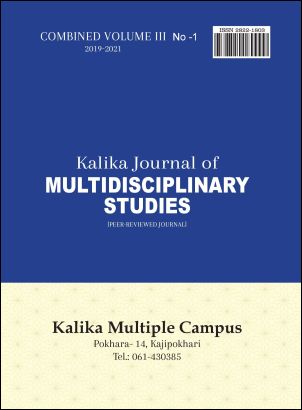Estimation of Internal Migration in Gandaki Province Using Indirect Techniques
DOI:
https://doi.org/10.3126/kjms.v3i1.48180Keywords:
Growth rate, indirect technique, internal migration, censusAbstract
This study is to measure the internal migration rate among various territories of Gandaki province of western Nepal. Direct measurement for migration is not systematic and effective for the developing country, hence the indirect method is to be used. The main objective of this study is to measure the internal migration growth rate concerning urban-rural differential, district-wise, ecological belt-wise, and urban area-wise in Gandaki province based on 2001, 2011 census data and the recently published preliminary data of the 2021 census. The tool to measure internal migration is the national growth rate method (NGRM) and improved NGRM using the total population of the region and the specified territory during the intercensal period. The migration rate computed from this method reveals that migration is concentrated to the highly developed district and district of the plain region. Out migrated population from the mountain and hill region make the Tarai region over-populated. Urban areas are overcrowded while rural areas are suffered from extensive out-migration which causes an imbalance distribution of natural and human resources. Among urban municipalities, the in-migrated population creates maximum pressure in Province headquarters followed by Nawalpur on Gandaki province.
Downloads
Downloads
Published
How to Cite
Issue
Section
License
All rights reserved. No part of this journal may be produced in any form or by any electronic or mechanical means, including infromation storage and retrieval system, without permission in writting from the publisher, except by a reviewer who may quote brief passage in review.




